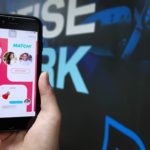
February being the traditional month of love, this month’s UXPA event was all about the UX of Dating, Romance and Love.
We had four speakers. Molly Nye, a Senior UX Designer at Proagrica, Oli Lipski, a Sex Tech Researcher at SEXTECHGUIDE, Joe Murley, Co-Founder of Datemakers and Jemma Ahmed, Head of Insight at MagicLab.
Molly kicked us off by bravely sharing her Tinder data for the past 5 years.
She started by putting it into a spreadsheet which gave her 34 variables and 119 possible matches. This was then given to a data analyst (a friend) who created four models.
Molly’s talk showed the power of data and how we might not know ourselves as well as we think we do.
But it also showed that some dating apps can be quite shallow and not ‘real life’. We need to make sure we do not get pigeonholed into only meeting people who match previous dates when part of love and romance is the serendipity.
Oli was our next speaker. She regularly looks at dating apps for the SEXTECHGUIDE and shared with us some of the biggest problems people using these apps face.
This includes data leaks and privacy issues, scams and harassment, and bias. Never mind the fact that you will not get seen as much if you are not paying for the premium version.
But it is not all doom and gloom. Some apps are trying to do better, remembering that these are people and not just hashtags and it should be all about human connection.
When asked what we, from other disciplines and areas, can learn from these apps, Oli suggested we learn from the more ‘kinky’ apps where safety, consent and looking after the vulnerable is most important.
After a break, Jo spoke to us about his startup datemakers.co.uk.
I was not really sure what this was until he explained that they are an experienced provider trying to help people have better relationships by offering better things to do together than just go to the cinema or dinner.
As a team of two, neither with real design or UX skills, it has been a steep learning curve for them, and he shared some of the things that he has learnt in the process.
This included the power of getting email notifications right, making the on-boarding process slick, being transparent with people about what they have to do and helping people to understand how to use the product.
Although it might seem obvious that these things are important, I think we are all aware that a lot of companies are still not getting this stuff right.
But I liked his last comment best. Maintaining a healthy relationship is as important as starting one.
Last up Jem spoke to us about the history of dating apps and how you research for them.
Apparently declarations of love and loneliness go back hundreds of years to hearts carved on trees.
This then leads on to printed personal ads, soldiers during WW1 looking for penpals, the start of questionnaire matching in the 50s and 60s, video dating in the 80s through to apps as we know them today.
Nowadays using dating apps is much more mainstream. Where once people were anonymous it is much more about self-expression now and showing your true self.
New apps are starting to think about how to slow the process down and make it more considered after all love and connections take time.
There is also the fact that finding the right someone might not be that quick. So how can the apps help you stay motivated and not lose self-esteem?
With all these things to consider the research has to be different too. You cannot easily recreate the ‘looking on dating apps feeling’ in a lab at 3pm on a Wednesday afternoon if they are normally used in the evening with a glass of wine.
The researchers also have to help people articulate instincts, something humans are not very good at. And the dating lifecycle should be short, not years so the research should follow this. For instance micro diary studies.
The evening was eyeopening, for as much as it looked at a world I have never experienced having met my husband at college, but also from some of the things we should be putting into all of our products, like remembering that people are people and not pots of data to use as a commodity and as such should be at the forefront of our thinking.
